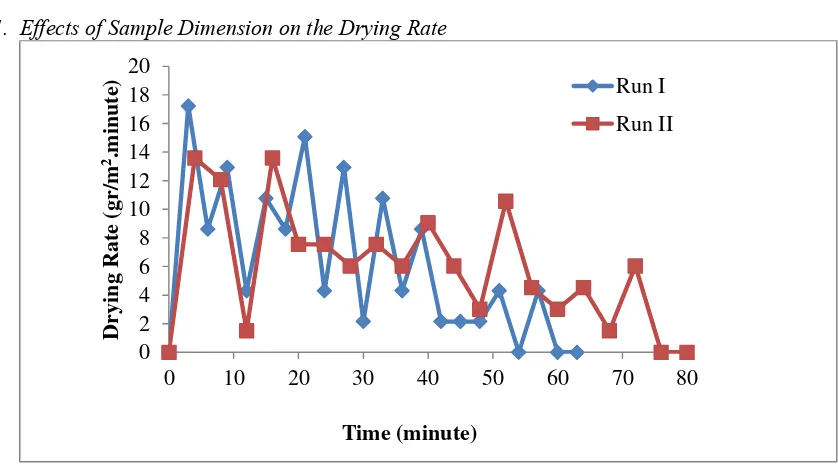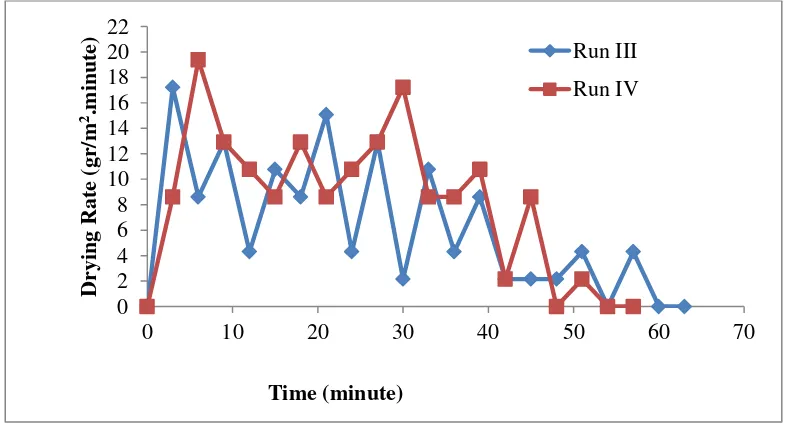IOP Conference Series: Earth and Environmental Science
PAPER • OPEN ACCESS
Herbal dryer: drying of ginger (zingiber officinale)
using tray dryer
To cite this article: B Haryanto et al 2018 IOP Conf. Ser.: Earth Environ. Sci.122 012093
View the article online for updates and enhancements.
Related content
Electrohydrodynamic (edh) drying of ginger slices (zingiber officinale)
Sumariyah, Ainie Khuriati and Enny Fachriyah
-Study of Local Herb Potency as Rumen Modifier: The Effect of Red Ginger (Zingiber officinale Var.Rubrum) on Parameters of Ruminal Fermentation In Vitro
A. Kurniawati, Widodo, W. T. Artama et al.
-Aqueous Extract Composition of Spent Ginger (Zingiber officinale var. Amarum) from Essential Oil Distillation
G J Manuhara, G P Mentari, L U Khasanah et al.
1234567890
International Conference on Agriculture, Environment, and Food Security IOP Publishing IOP Conf. Series: Earth and Environmental Science 122 (2018) 012093 doi :10.1088/1755-1315/122/1/012093
Herbal dryer: drying of ginger (
zingiber officinale
) using tray
dryer
B Haryanto, R Hasibuan, Alexander, M Ashari and M Ridha
Department of Chemical Engineering, Universitas Sumatera Utara, Padang
Bulan, Medan 20155, Indonesia
E-mail: bode.haryanto@usu.ac.id
Abstract. Drying is widely used as a method to preserve food because of its convenience and affordability. Drying of ginger using tray dryer were carried out at various drying conditions, such as air-drying flow, air-drying temperature, and sample dimensions, to achieve the highest drying rate. Samples with various dimensions were placed in the tray dryer and dried using various air-drying flow and temperatures. The weights of samples were observed every 3 minutes interval. Drying was stopped after three times of constant weighing. Data of drying was collected to make the drying curves. Drying curves show that the highest drying rate is achieved using highest air flow and temperature.
1. Introduction
Ginger (Zingiber officinale) is a herb plant. Fresh ginger root is usually consumed as spice in the tropical countries and dried ginger is used as medicinal plant internationally. Dried ginger is usually used as spice or medicine. Quality specifications for export as medicinal herb required it to be properly cut into pieces, well dried and proper storage [1].
Drying process plays an important role in the preservation of agricultural products due to its energy efficiency. Drying has been used since ancient times. Hot air drying is the most frequently used in dehydration operation in the food and chemical industry. The wide variety of preserved foods, which today are available to the consumers and the interesting concern for meeting quality specifications and energy conservation, emphasize the need for a thorough understanding of the drying process [2,3].
Drying rate is calculated by measuring the weight of a drying material over function of time. Drying rate curves represented in three different types of plots that are drying rate versus sample dimension, drying rate versus drying-air temperature and drying rate versus drying-air flow.
The objective of this study is to determine the effects of the variables and to find which variable resulting the fastest drying rate of ginger samples.
2. Materials and Methods
2.1. Equipment
2
1234567890
International Conference on Agriculture, Environment, and Food Security IOP Publishing IOP Conf. Series: Earth and Environmental Science 122 (2018) 012093 doi :10.1088/1755-1315/122/1/012093
Figure 1. Tray Dryer (Armfield UOP 8)
2.2. Materials
Ginger used in all experiments were obtained from traditional market around Universitas Sumatera Utara. In order to perform all the experiments in identical conditions, ginger are selected manually. Then the gingers were skinned and cut into 2 different bar shape with different thickness.
Table 1. Dimension of Ginger Samples Sample Length Width Thickness
Sample I 4 cm 2 cm 0,1 cm
Sample II 4 cm 2 cm 0,2 cm
2.3. Experimental Procedure
In order to obtain the evaluation factors used for the research, measurement of air-drying temperature and moisture content were made. Drying time was determined with a stopwatch.
The drying air temperature was controlled with the aid of a thermostat attached to the heating element of the dryer, which was previously calibrated to read its maximum at the drying air temperature and turn off heating if maximum threshold is exceeded.
Two drying-air temperature (36oC, 39oC) and two drying-air flow (4,0 m/s, 4,5 m/s) were applied. The ginger samples were weighed to obtain the initial sample weight. Three of same dimension samples that had been cut were placed into each trays. The change of weight recorded every 3 minutes. Drying was stopped after three times of constant weighing. Data obtained from the weight measurement then used for calculating the moisture content and drying rate of the samples. Then the dry-weight basis moisture content (Md) can be written as follows [4]
(1)
Where, w = initial sample weight, g & d = weight of dry product, g. Moisture content on dry-weight has been used for all calculation purpose in this paper. Md then used for calculating the drying rate (R).
R can be written as follows [5]
(
) (2)
1234567890
International Conference on Agriculture, Environment, and Food Security IOP Publishing IOP Conf. Series: Earth and Environmental Science 122 (2018) 012093 doi :10.1088/1755-1315/122/1/012093
Table 2. Experiment Design of Drying Process
Run Sample Drying-Air Temperature
3. Results and Discussion
3.1. Effects of Sample Dimension on the Drying Rate
Figure 2. The Variation of Drying Rate for Different Sample Dimension
Figure 2. shows the drying rate when the ginger samples were dried at the respective dimension of (4 x 2 x 0,1) cm and (4 x 2 x 0,2) cm and drying-air temperature of 36oC and drying-air flow of 4,0 m/s. The drying rate reach constant value at minute 63 for run I and minute 81 for run II. Kim et al. [6] reported that with the increasing of surface area, the drying rate is decrease.
3.2. Effects of Drying-Air Temperature on the Drying Rate
Figure 3. shows the drying rate when the ginger samples were dried at the respective air-drying temperature of 36oC and 39oC and sample dimension of (4 x 2 x 0,1) cm and drying-air flow of 4,0 m/s. The drying rate reach constant value at minute 57 for run III and minute 63 for run IV. Tzempelikos et al. [7] state that drying-air temperature influencing the drying rate. The heat transfer seems to be most significant for higher drying-air temperature.
4
1234567890
International Conference on Agriculture, Environment, and Food Security IOP Publishing IOP Conf. Series: Earth and Environmental Science 122 (2018) 012093 doi :10.1088/1755-1315/122/1/012093
Figure 3. The Variation of Drying Rate for Different Drying-Air Temperature
3.3. Effects of Drying-Air Flow on the Drying Rate
Figure 4. The Variation of Drying Rate for Drying-Air Flow
Figure 4. shows the drying rate when the ginger samples were dried at the respective air-drying flow of 4,0 m/s and 4,5 m/s and sample dimension of (4 x 2 x 0,1) cm and drying-air temperature of 39oC. The drying rate reach constant value at minute 39 for run V and minute 45 for run VI. Chinenye [8] state that drying rate increase with increasing drying-air flow but decrease with increasing time.
1234567890
International Conference on Agriculture, Environment, and Food Security IOP Publishing IOP Conf. Series: Earth and Environmental Science 122 (2018) 012093 doi :10.1088/1755-1315/122/1/012093
4. Conclusion
From the study it can be concluded that the drying rate is affects by variables, such as drying-air temperature, drying-air flow, and sample dimension. The best drying rate in this study is achieved by using the drying-air temperature of 39oC and drying-air flow of 4,5 m/s for the drying of ginger sample with dimension of (4 x 2 x 0,1) cm (Run VI).
References
[1] Hoque M A, B K Bala, M A Hossain and M Borhan Uddin 2013 Drying Kinetics of Ginger Rhizome (Zingiber officinale) J. Agril. Res. 38(2) 301-309
[2] Fudholi A, M Y Othman, M H Ruslan, M Yahya, A Zaharim and K Sopian 2011 The Effects of Drying Air Temperature and Humidity on the Drying Kinetics of Seaweed Recent Researches in Geography, Geology, Energy, Enviroment and Biomedcine 129-133
[3] Osueke C O, B O Akinnuili, A A Adediran, P P Ikubanni and O Agboola 2015 An Algorithm of a Convectional Factory Electric Tray Dryer The International Journal Of Engineering and Science (IJES)4 17-25
[4] Desmukh V V, Neeraj Chandraker, R S Thakur and A K Chandrakar 2015 Analysis of Moisture Content of Pulses Pellets using Fluidized Bed Dryer Journal of Chemical and Pharmaceutical Research 7(6) 447-451
[5] Chin S K, Siew E S and Soon W L 2015 Drying Characteristics and Quality Evaluation of Kiwi Slices under Hot Air Natural Convective Drying Method International Food Research Journal22(6) 2188-2195
[6] Kim T H, J G Hampton, L U Opara, A K Hardacre and B R Mackay 2002 Effects of Maize Grain Size, Shape and Hardness on Drying Rate and the Occurence of Stress Cracks Journal of the Science of Food and Agriculture82 1232-1239
[7] Tzempelikos D A, A P Vouros, A V Bardakas, A E Filios and D P Margaris 2014 Case Studies on the Effect of the Air Drying Conditions on the Convective Drying of Quinces Case Studies of Thermal Engineering
[8] Chinenye N M 2009 Effect of Drying Temperature and Drying Air Velocity on the Drying Rate and Drying Constant of Cocoa Bean Agricultural Engineering International: the CIGR EjournalXI
Acknowledgements


